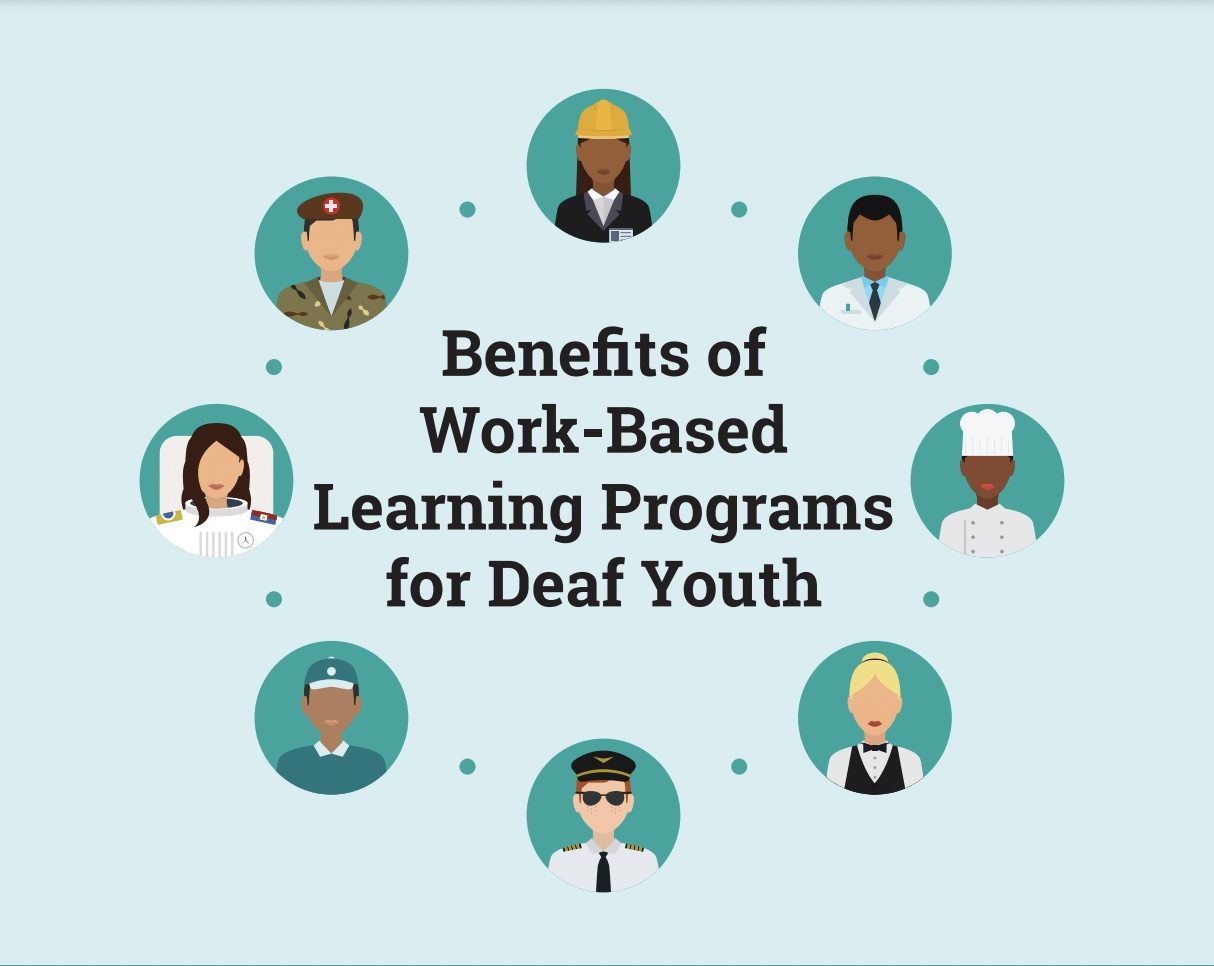This document explains work-based learning where the student actively participates in a work environment and summarizes the literature of why work based learning opportunities are important to all youth.
Introduction
Providing deaf students with opportunities to apply what they learn in the classroom to career settings is important for preparing them for life after high school. Work-based learning programs use “community workplaces to provide students with the knowledge and skills that will help them connect school experiences to real-life work activities and future career opportunities.” Federal legislation, such as the Workforce Innovation and Opportunity Act (WIOA) and the Every Student Succeeds Act (ESSA), emphasizes the importance of providing students with work-based learning opportunities. This document explains work-based learning where the student actively participates in a work environment and summarizes the literature of why work-based learning opportunities are important to all youth.
Why are Work-Based Learning Programs Important?
Work-based learning programs include opportunities outside of traditional school settings, including internships and apprenticeships. Internships are temporary work experiences that focus on job skill development that can be paid or unpaid. Apprenticeships combine instruction with on-the-job experiences in a particular industry or field. Apprentices are typically paid a training wage. Other work-based learning opportunities include experiences such as job shadowing, service learning, and cooperative education. Each of these experiences provide opportunities for students to apply classroom knowledge in a workplace, improve soft skills, and learn from professionals currently working. These experiences also help students develop specific work and job skills, such as using workplace equipment or tools.
Work-Based Learning Benefits for Youth
- Work-based learning programs can help students develop new workplace skills, develop positive attitudes about academic skills, and improve motivation for academics and careers.
- Youth who participate in work-based learning programs experience improved communication skills, problem-solving skills, and self-confidence.
- Early work experiences lead to improved postsecondary outcomes and specifically higher levels of long-term employment.
- Youth can experience greater job satisfaction by participating in work-based learning programs.
- Apprenticeships can lead to higher wages and better standards of living for people with disabilities.
- Internships provide on-the-job learning, as well as development of a professional network and references.
Work-Based Learning Benefits for Businesses
- Businesses that participate in work-based learning programs can improve productivity and employee retention.
- Work-based learning programs can help increase workforce diversity, an invaluable asset, by providing businesses with underrepresented people who are not traditionally in their pipeline of workers.
- Businesses can learn about inclusion and diversity by including youth with disabilities in their work environments.
Work-Based Learning Benefits for Businesses
- Deaf students benefit from opportunities to develop workplace readiness skills that may not otherwise be accessible to them. Deaf students can learn more about potential careers, better understand their abilities, and improve their time management skills through work-based learning programs.
- Work-based learning programs promote career success for deaf students, which leads to improved social capital and opportunities for engagement. These programs also provide an opportunity for deaf students to work with people they would normally not have contact with, as well as experience a sense of community.
- Most hearing supervisors do not have opportunities to work with deaf colleagues. Work sites participating in work-based learning programs can improve their cultural competency, develop more positive attitudes toward deaf people, and increase their understanding of Deaf culture.
© 2019 National Deaf Center on Postsecondary Outcomes
Benefits of Work-Based Learning Programs for Deaf Youth licensed under Creative Commons BY-NC-ND 4.0 International






